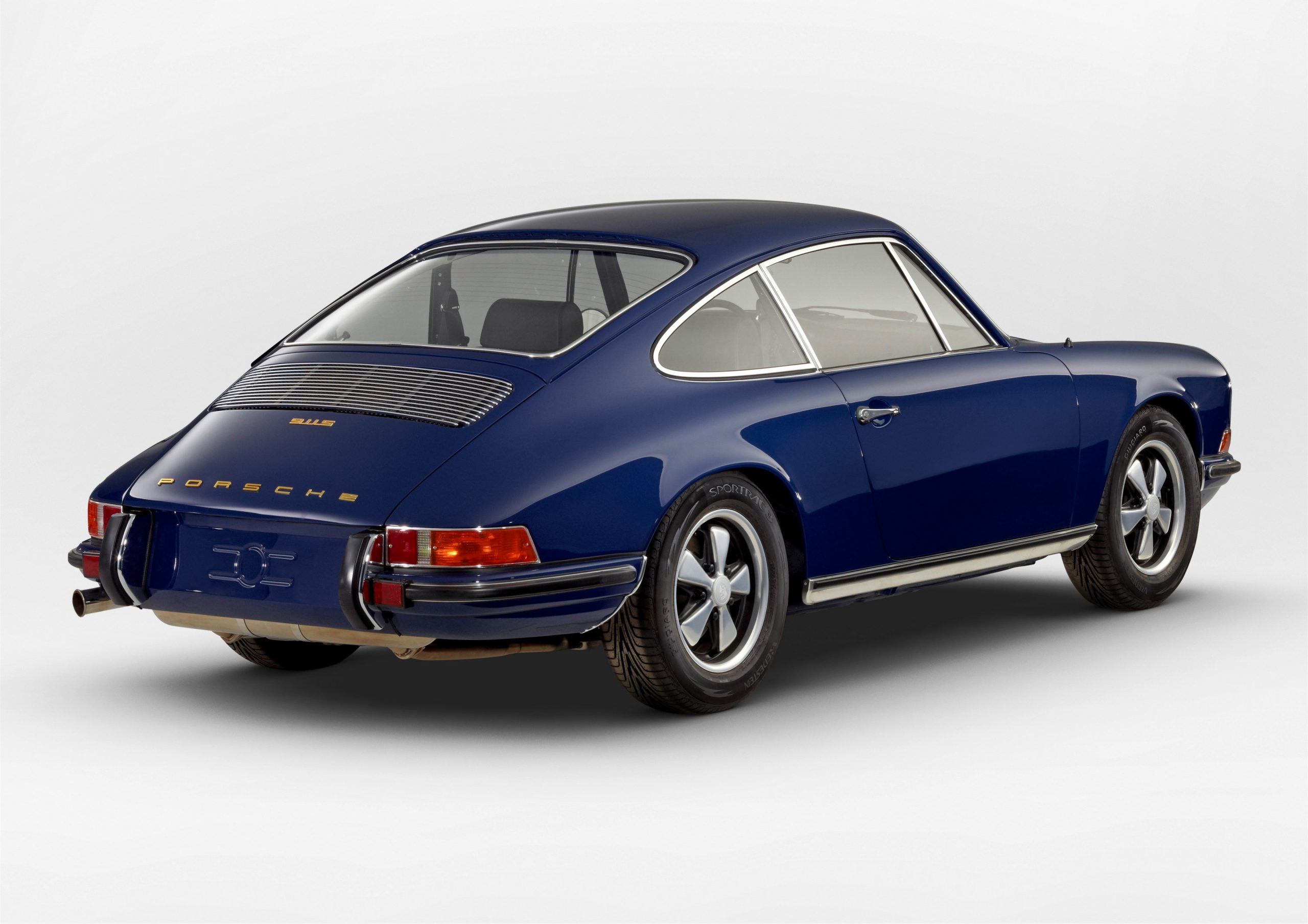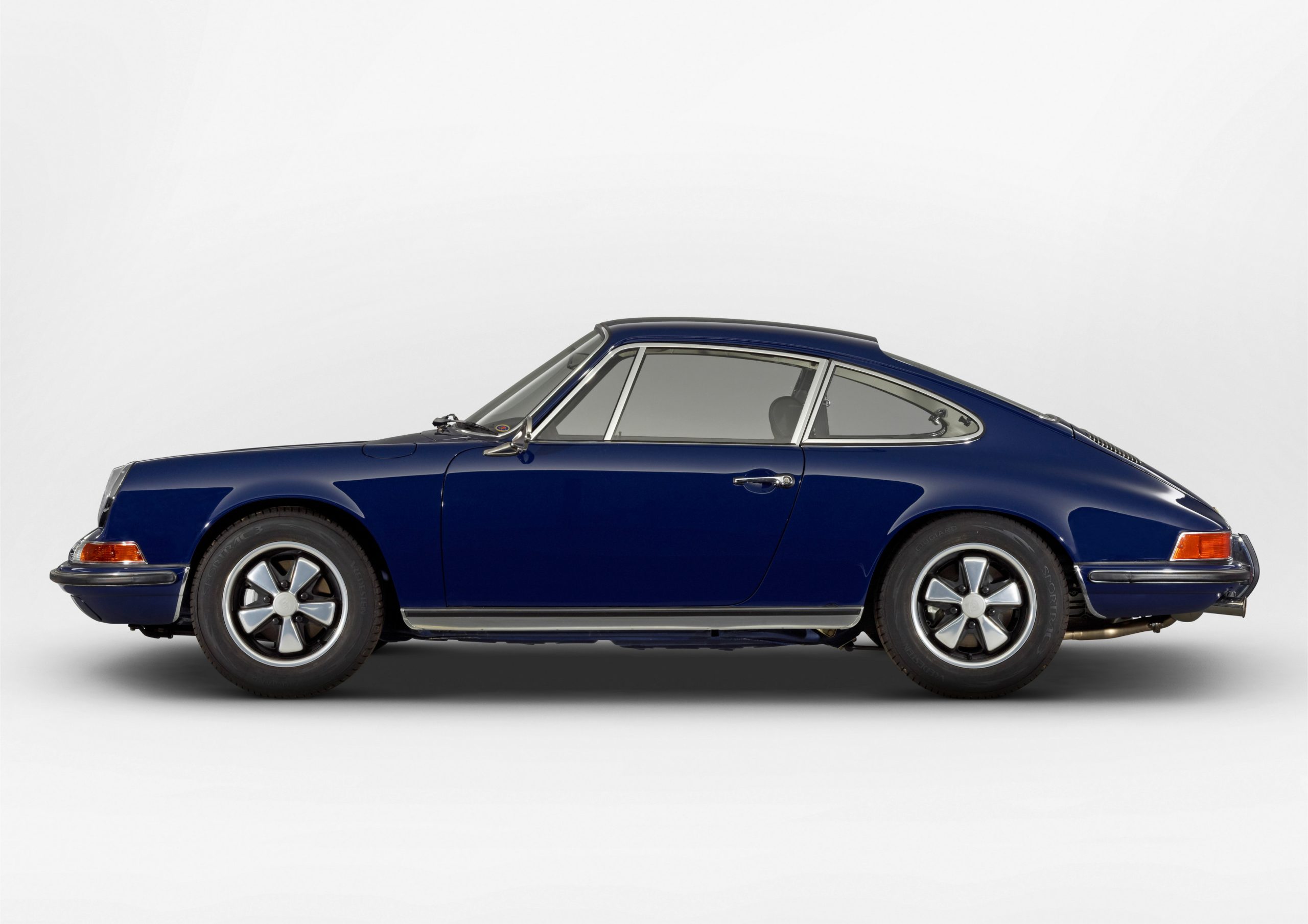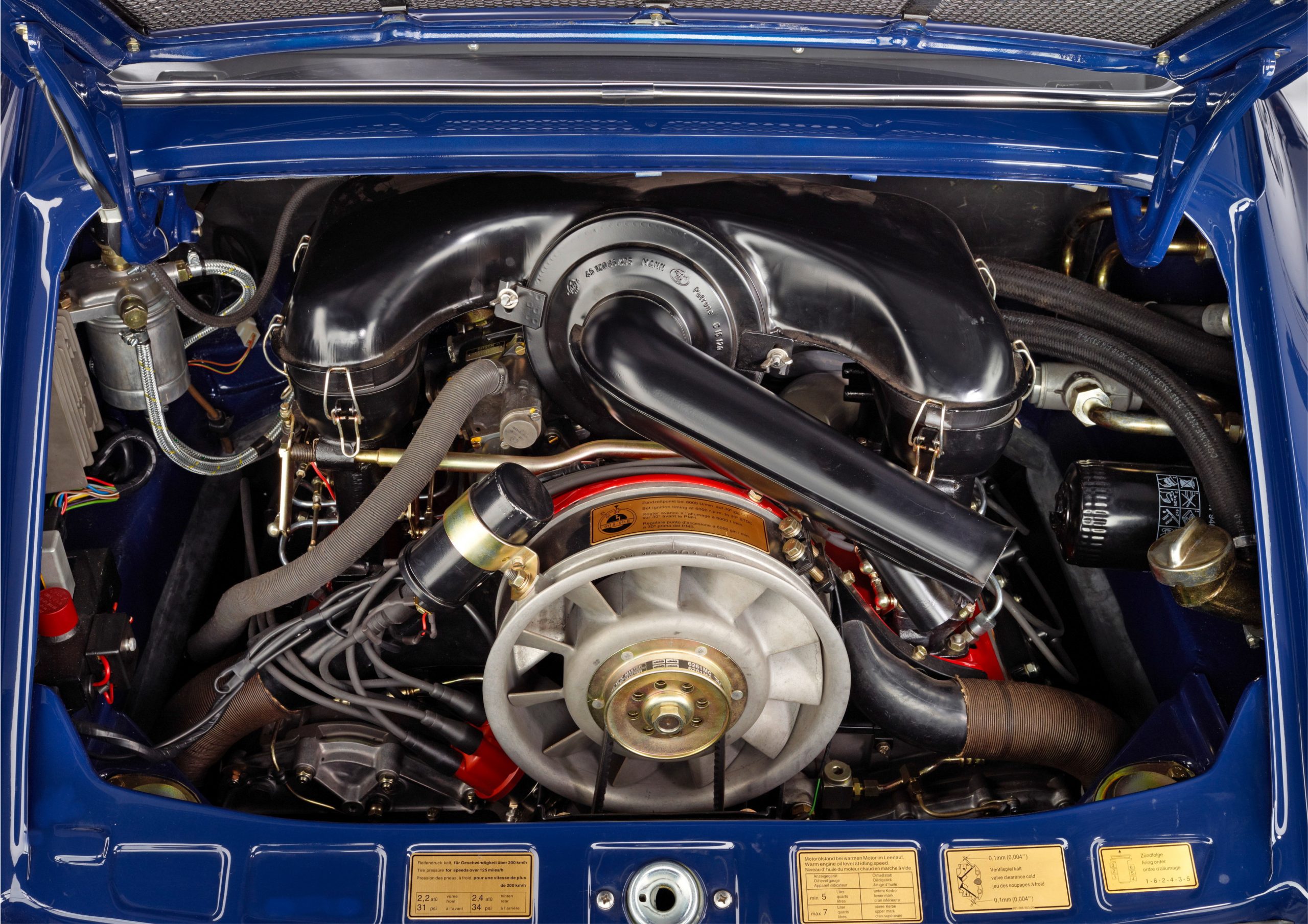The Porsche 911 is a sports car from Porsche and the successor to the Porsche 356. Known for short as the “Neunelfer”, or just “Elfer”, the Porsche 911 is the most famous vehicle from the Stuttgart-based company and is considered the epitome of the brand.
The Porsche 911 is a sports car from Porsche and the successor to the Porsche 356. Known for short as the “Neunelfer”, or just “Elfer”, the Porsche 911 is the most famous vehicle from the Stuttgart-based company and is considered the epitome of the brand.
Compared to the 356 model, the 911 represented a major step forward in development. This applies to the entire vehicle design and in particular to the engine. Before the start of 911 series production in September 1964, 13 prototypes were still being built as the Porsche 901. Porsche presented what was later called the “original model” in September 1963 at the IAA in Frankfurt am Main under its internal development number as the Porsche 901. However, the designation had to be changed shortly after the start of sales in November 1964, as Peugeot had secured the rights to all three-digit numbers with the “0” in the middle as the designation for its passenger car models. Together with the 13 901 prototypes, a total of 230 Type 911 cars were produced in the first model year 1965 (from September 1964). The price was initially 21,900 German marks, which, adjusted for inflation, corresponds to about 49,600 euros in today’s currency.
The car was larger overall and more spacious inside than its 356 predecessor. The larger window areas resulted in better all-round visibility, which contributed to greater road safety. The approximately 11 cm longer wheelbase improved ride comfort. The volume of the luggage compartment at the front also increased.
It is said that one of the requirements Ferdinand Alexander Porsche had for the design of the body was to be able to accommodate at least one set of golf clubs in the trunk, since the typical Porsche clientele missed something like this in the 356. However, the main criterion for the body was a high level of recognition as a Porsche and a similarity to the previous model. Likewise, the rear engine (behind the rear axle) was a fixed criterion that was in the specifications of the body developers. Together with Erwin Komenda, who had already had a major influence on the development of the Porsche 356, Ferdinand Alexander Porsche designed the shape of the 911, which is still characteristic of the car today.
The “original model” presented in 1963 was built until mid-1973 with different engine outputs (T, L, E and S) and equipment, initially only as a coupe and from model year (MY) 1967 additionally as an open version (Targa). The Targa was a so-called safety cabriolet with a wide roll-over bar, in which the roof and originally also a residual top with rear window (called softwindow) could be removed. The 911 Targa (Italian for shield) was unveiled in 1965 at the IAA in Frankfurt am Main. The name is derived from the Targa Florio, an endurance race in Sicily that Porsche won five times from 1956 to 1965.A convertible was not available until mid-1982 in the “G model.
In 1971 and 1972, just under 10,000 Porsche 911 T, E and S of the 2.4 liter E model were produced as what were later called “oil flap models”. In these vehicles, the filler neck for the oil was located under a flap on the outside of the right-hand B-pillar instead of in the engine compartment. With the 1973 model year, the oil flap disappeared again – allegedly also because both owners and gas station attendants unknowingly filled gasoline into the supposed fuel tank, which is said to have resulted in engine damage.
The concept of the air-cooled boxer engine as a rear-mounted engine remained, but the four-cylinder, 1.6-liter displacement of the previous model was replaced by a redesigned two-liter, six-cylinder engine. The reason for the increase in the number of cylinders and displacement was, on the one hand, that the 356 series engine, which was still based on the engine of the VW Beetle and had a maximum output of 95 hp (70 kW), could no longer be further developed at economically justifiable expense and, on the other hand, the fact that a six-cylinder engine offered smoother running and thus greater comfort. The output of the new drive was 96 kW (130 hp) at a speed of 6100 rpm. Two Solex triple carburetors produced the fuel-air mixture. A dry sump lubrication system with oil cooler on the engine (later also an additional cooler in the front right fender) served for lubrication and internal cooling of the engine. The large axial fan for the cooling air immediately caught the eye in the engine compartment.
In order to attract customers for whom a 911 was too expensive, the Porsche 912 was introduced with the final cessation of production of the 356 in 1965, a more simply equipped 911 with the 90-horsepower four-cylinder boxer engine of the 356.
The top model available from summer 1966 (model year 1967) was the 911 S (Super) with a higher-compression 160-hp carburetor engine. The 911 with 130 hp engine was given the designation 911 L (Luxury) in the 1968 model year; at the same time, the 911 T (Touring) with 110 hp engine and four-speed transmission (otherwise five speeds) was available as a comparatively inexpensive entry-level model.
In 1968 (model year 1969), the first extensive revision of the Porsche 911 took place. Instead of the carburetors previously used, mechanical intake manifold injection was used (except in the Estate and Type 912), and the injection pump was driven by the left camshaft via a toothed belt. In addition to increased engine power, the conversion resulted in lower pollutant emissions, improved part-load performance, slightly lower fuel consumption and less sensitivity to air pressure at altitude. The model designation changed from 911 L to 911 E, which now had an output of 103 kW (140 hp). In the 911 S model, output increased accordingly to 125 kW (170 hp). At the same time, the engine mass was reduced by 16 kg through the use of magnesium die-cast parts.
In 1969, the displacement of all engines was increased from 2 liters to 2.2 liters, and two years later to 2.4 liters. The power of the engines increased accordingly, so that the 2.4-liter 911 S had a maximum output of 140 kW (190 hp). As power increased, so did fuel consumption to 17.0 liters per 100 km. With a top speed of 230 km/h, the 911 S was the fastest German production car in 1972. Production of the 912 was ended. The Carrera RS of the 1973 model year had a 2.7-liter engine.
The front wheels were suspended on wishbones with damper legs, while the rear wheels were suspended on sloping links. Torsion bars were used for suspension at the front and rear, while telescopic shock absorbers at the rear and damper struts at the front took care of damping. The harder-tuned 911 S also had stabilizer bars. For the comfort-oriented 911 E, there were level-adjusting hydropneumatic struts. Braking was by hydraulically actuated disc brakes on all wheels. Also new was the rack-and-pinion steering with a twice-angled safety steering column.
One point of criticism at the beginning was the clear tendency to oversteer, especially when cornering quickly. To counteract this, from 1966 the 911 was fitted with two cast-iron ballast weights, each weighing 11 kg, behind the front bumper. In 1968, Porsche lengthened the wheelbase by 57 mm with longer swingarms, adapted the wheel cutouts and eliminated the ballast. To improve mass balance, even the battery was split into two small units, housed in the front wheel arches on the left and right. The Type 911 S was recognizable by its distinctive Fuchs alloy wheels, the Fuchsfelgen.
The dashboard was revised from that of the 356 and adapted to the taste of the 1960s. The ignition lock, however, remained to the left of the steering column. The position of the ignition key came from racing, when race cars were parked next to the track at the start and drivers had to walk to their cars first and then start them. Since a key positioned to the left of the steering wheel could be operated more quickly when getting into the car, to save time, many race cars were equipped this way. In 1966, the S model had more extensive equipment than the base model.
The arrangement of the five instruments was retained until the 993 model: to the left of the centrally mounted large tachometer, the combination instruments for tank level/oil level and oil temperature/oil pressure, and to the right, the speedometer and analog clock.





